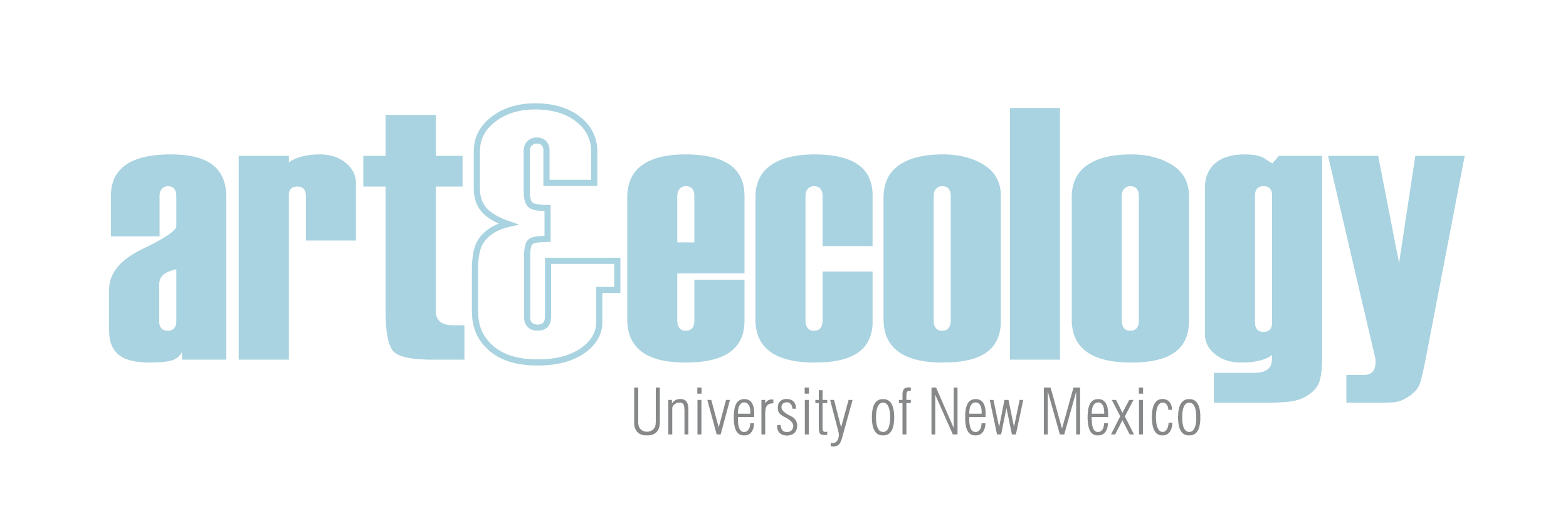Art & Ecology is an interdisciplinary, research-based academic program engaging contemporary art practices.
Graduate and undergraduate students develop environmental and cultural literacy with a conceptual foundation and a wide range of production skills, including drawings, sculpture, social practice, performance, and digital media. Advanced coursework includes the Land Arts of the American West program, which offers bioregional field-based professional practice courses. Students in Art & Ecology have the opportunity to work on various collaborative and interdisciplinary projects with departments across UNM and on comprehensive thesis projects integrating community and ecological research.
The Art and Ecology curriculum prepares students to pursue various career avenues such as:
- Artist: Acquire and hone the skills necessary to successfully complete interdisciplinary and/or collaborative projects with museums, galleries, public/site-specific, community, and alternative contexts.
- Educator: Acquire and hone skills to successfully lead classroom, field, and studio courses. Articulate ecological and aesthetic principles for students in formal educational settings as well as in alternative contexts like community workshops.
- Cultural Organizer: Learn to combine artistic practices with organizing skills to become an active part of movement-building for social and environmental justice.
Art & Ecology courses encourage students to investigate, question, and expand upon inter-relationships between cultural and ecological systems. Our courses place emphasis on methods and tools from many disciplines—including art, design, humanities, sciences, activism, and traditional ecological knowledge—to foster collaborative and field-based research and art-making. We view art as an agent of analysis, critique, and radical change. Art & Ecology is committed to stimulating ideas, new forms of public engagement, aesthetic experience, and interdisciplinary practice.
Art & Ecology has established working relationships with many partners, including the ASU Desert Initiative, Rubin Center for Visual Arts, Working Classroom, Arid: A Journal of Desert Art, Design, and Ecology, Geneva HEAD University of Art and Design, Epicenter, Albuquerque Museum, Santa Fe Art Institute, Albuquerque Metropolitan Arroyo Flood Control Agency, Sevilleta Long Term Ecological Research Site, Valle de Oro Wildlife Refuge, Center for Land Use Interpretation, Simparch, Borderlands Restoration Institute, Greater Chaco Coalition, El Centro Artistico y Cultural, SeedBroadcast, HawkMoth Farm + Agroecology Center, Bundian Way at Australia National University, Visual March to Prespes at University of Western Macedonia, the Center for Art + Environment, and LandMarks at Mira Costa College.
Art & Ecology currently also has active on-campus partnerships with the UNM Departments of Biology, American Studies, University Honors, Sustainability Studies, and the School of Architecture and Planning.

